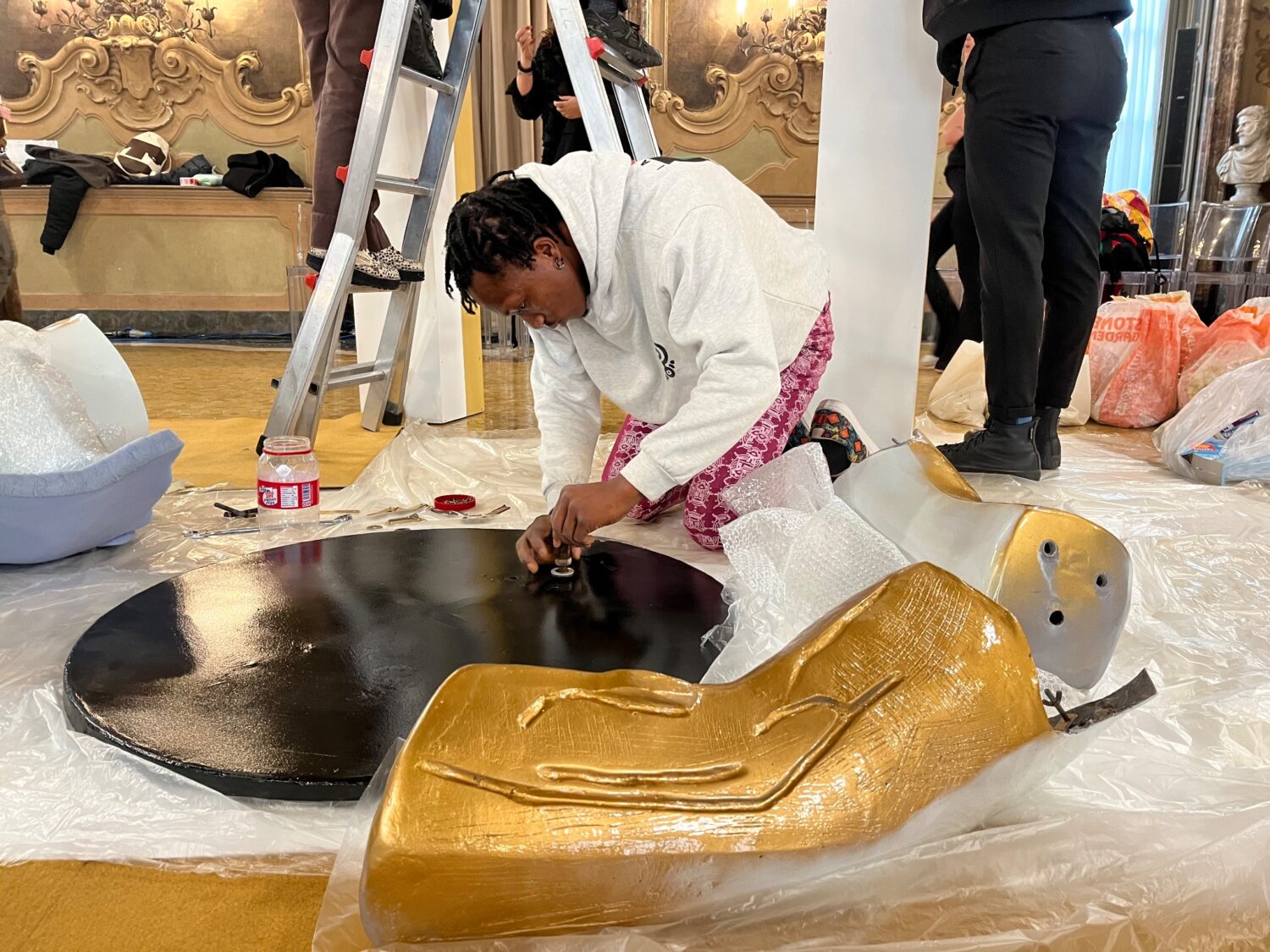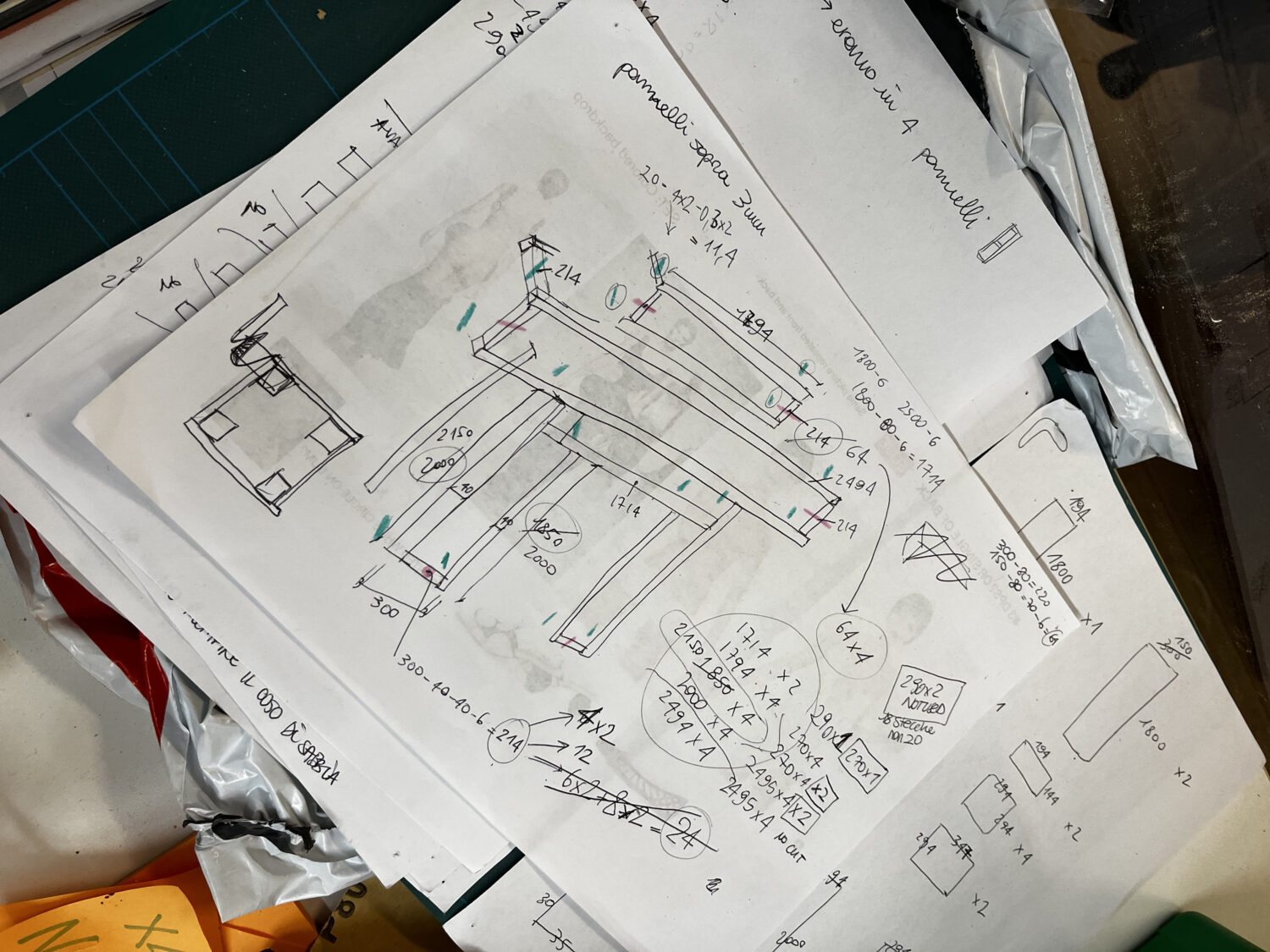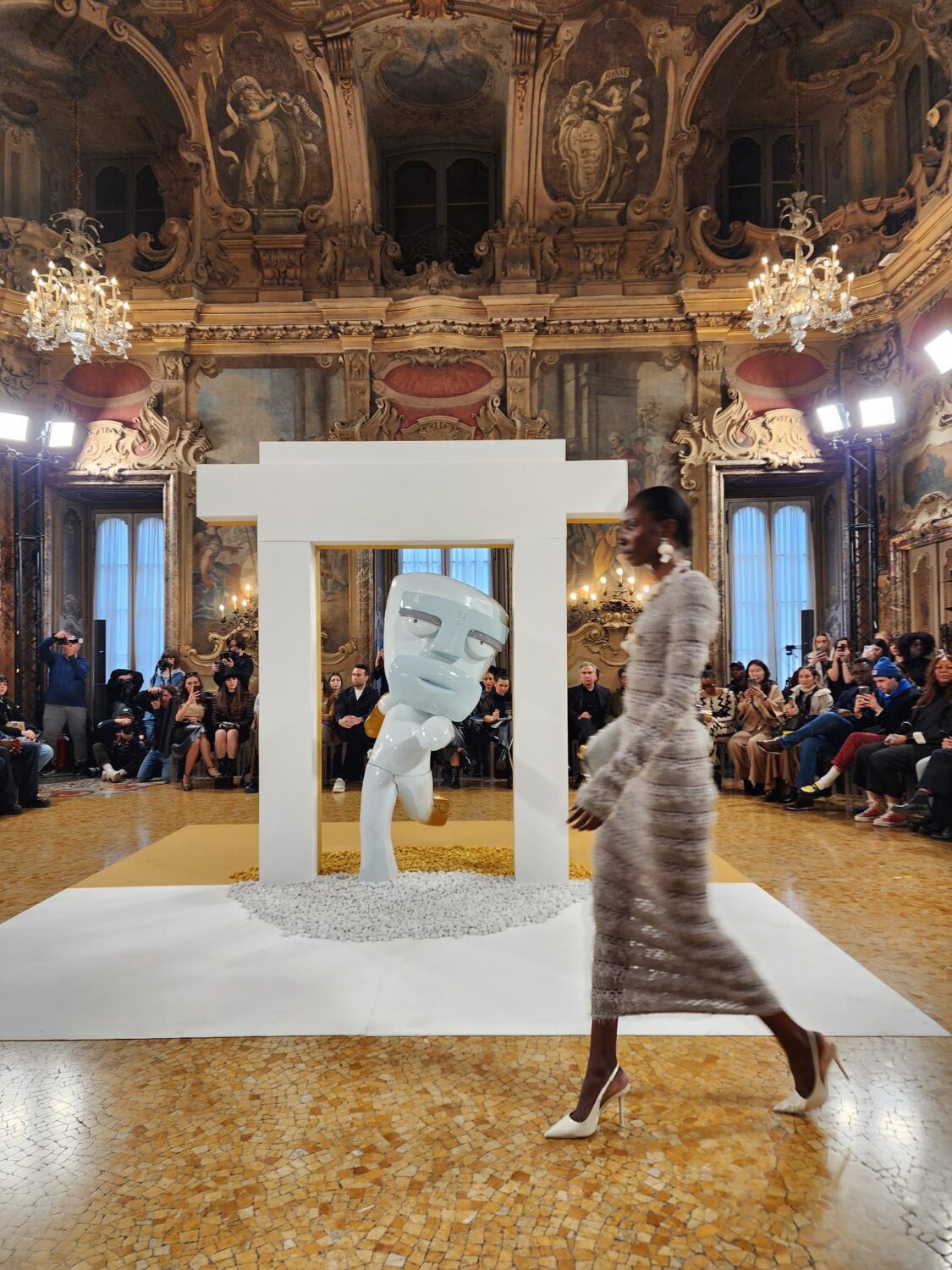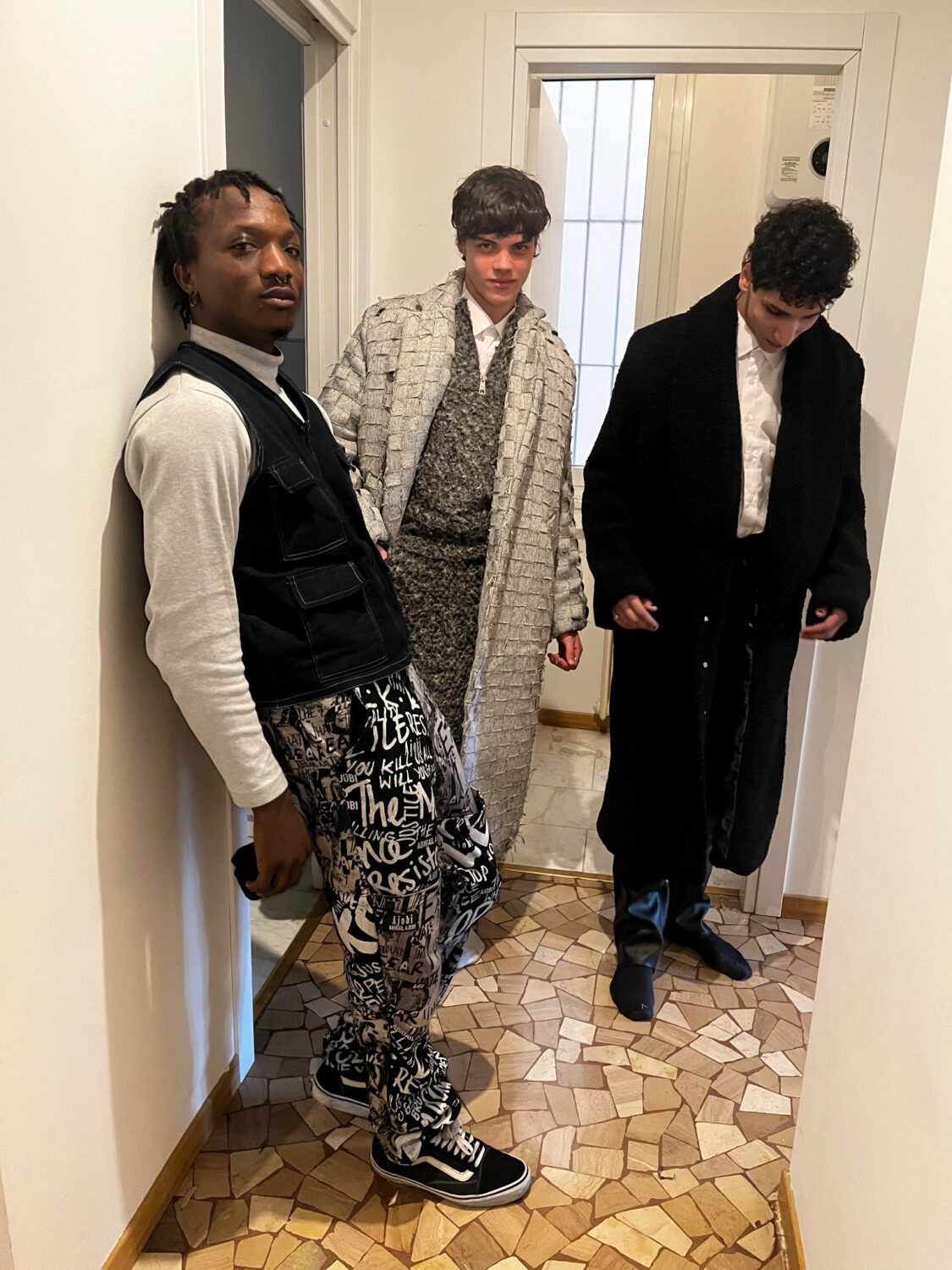Meet the Nigerian Creatives Joining Forces for Milan Fashion Week
By Yusuff Aina and Tokyo JamesDuring Milan Fashion Week, Nigerian artist Yusuff Aina and Nigerian-British fashion designer Tokyo James unveiled an ambitious installation and runway show set within the historic Palazzo Reale Sala Cariatidi. Presented by the Abuja-based gallery, Retro Africa, helmed by Dolly Kola-Balogun, the installation, titled Domain Expansion, includes a life-size sculptural figure from Aina’s Eniyan series. Made of fiberglass and standing at over six feet tall, the character is captured at a pivotal moment of change, represented by its journey through a doorway. Shedding further light on their collaboration, Aina and James discuss how the project came to be.

Tokyo James: We first met over Instagram I believe — is that right?
Yusuff Aina: Yeah over a DM.
TJ: Yeah, I was just scrolling through and came across your work — photos from your exhibition popped up. I stopped and thought, “Wow, this is really interesting.” It captivated me and I wanted to know more immediately. I initially thought it was the work of an international artist, perhaps somebody from South Korea or Europe – I didn’t know it was someone in Nigeria. Then I realised that this person is African.
It’s interesting because there’s sort of an expectation about what African artists should be producing — it feels like this ends up being influenced by which African artists are chosen and celebrated by the West to represent this part of the world. Your work felt different somehow. So I did some more research and then reached out.
YA: I was just driving in Lagos, in traffic, and I got this message. I was like, “Ok, who is this person?” I saw you were a designer and I realised I had come across your work in the past. Tokyo, you have a signature style and that really interested me. As an artist, I like when people have a clear identity. So I thought, let’s have a chat. You called me sometime later, and of course, I was in traffic again. I was like, “Can I call you back?”

TJ: [Laughs] How is it that you are always in traffic? Literally always. When are you not in traffic?
YA: That’s Lagos. [Laughs] Yeah, so I call you back and we got to know each other a bit. Initially we talked about doing a short film — that’s how it started out and it continued to expand.
TJ: Yeah, it really evolved from there.
YA: While we were shooting we started to think of other ideas that could be more interesting. And we wanted to push it into more of a fashion space.
TJ: When I’d first approached you, your exhibition at Art Twenty One in Lagos was really on the top of my mind. The gallery had been taken over by Retro Africa. And I was in awe. Caline [Chagoury], a good friend and the founder of Art Twenty One, has very particular taste — and I was quite shocked that she allowed someone to do this kind of exhibition in her space. It was an exciting moment. And I had to know who the artist was who convinced Caline to do such a show. There was so much to look at and such attention to detail.
YA: Yeah, five different rooms.

TJ: Yes, exactly. And I think what resonated with me most was the universality of the work. This could have been shown at the MoMA or the Tate Modern, or even the V&A. It was African but it was also Western at the same time — as a designer, this comes up for me a lot. I was born and raised in London but my African identity is still central. We’re similar but we’re different. This juxtaposition, the intertwined histories — it fascinates me.
YA: I’ve always wanted my work to be a bridge — to bridge cultures and different human existences. Growing up, I would sometimes forget that I’m Yoruba, from this particular part of the state, this place in the world — and I think this feeling unintentionally became a part of my artistic narrative. The meaning behind my characters — or Eniyan — are that they can represent anybody, bridging race, identity, and stereotypes. This is to make sure that we can see each other for who we are as individuals. My characters give voice to everybody.
When the conversation began with you, I was watching this anime, Jujutsu Kaisen — and in it, there is this term that comes up called “domain expansion.” And something about that made a lot of sense. I like to take signs from things that I’m experiencing. For me, “domain expansion” means something along the lines of creating a world inside of a world — a new space that allows you to expand your possibilities. The way the term is used is different in the anime but that’s how I tapped into it for my work. It became the title of our collaboration.

TJ: When we met up and you told me about the idea behind the Eniyan, it just made sense to me. We’re drinking from the same Kool-Aid. Watching a lot of cartoons is one of the many things we have in common. I think our collaboration is here to challenge what people perceive should be coming out of this part of the world. We’re here to show that there are alternative voices that exist within this space. Not just the voices that we constantly celebrate because they come from a specific set of narratives that the West is excited by.
Here are another bunch of kids — we are African but we come with different experiences and different outlooks. For Milan Fashion Week, we’re working together in a beautiful historic building [Palazzo Reale Sala Cariatidi] with paintings all over the walls and pottery on display — I think it fits perfectly with the designs I’ve done this season, which accompany your Eniyan sculpture. Your character is walking this time.
YA: Yes, they are walking through an arch — really, it’s a gate or torii. It represents a moment of transition. As the Eniyan walks through it, there is a sense of transformation. And I think this idea of transformation really fits well with your new collection too. The whole project just made sense. And when I spoke with my curator, Dolly Kola-Balogun, about how the collaboration was evolving, she was so excited.
TJ: Dolly is amazing. She’s the Isabella Blow of the African contemporary art scene.
Feature image: Courtesy of Retro Africa